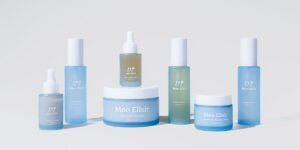Parabens: Unpacking the Science, Dispelling the Myths, and Navigating Consumer Choices
Parabens have long been a staple in the formulation of cosmetics, personal care products, and even pharmaceuticals. Despite their widespread use, parabens remain one of the most misunderstood and debated ingredients in consumer products. Fueled by a mix of scientific uncertainty, media reports, and marketing campaigns, public opinion often skews towards fear and skepticism. To make informed decisions, it is vital to unpack the science behind parabens, separate myths from facts, and understand how to navigate product choices responsibly. This article delves into the role parabens play, examines safety assessments, addresses common misconceptions, and offers practical advice for consumers.
Parabens are a class of synthetic preservatives derived from para-hydroxybenzoic acid. They are widely used in cosmetics, skincare products, shampoos, deodorants, and even some processed foods. Their primary function is to prevent the growth of harmful bacteria, mold, and yeast that can spoil products and pose health risks to consumers.
Read Also: The Clean Beauty Movement: A Deep Dive into Transparency, Indie Brands, and Demystifying Labels
The most common parabens include methylparaben, ethylparaben, propylparaben, and butylparaben. Their popularity stems from their effectiveness at low concentrations, cost-efficiency, and compatibility with a broad range of formulations. Parabens help extend the shelf life of products, ensuring their safety and usability over time.
Because products like lotions and shampoos contain water and organic materials, they are susceptible to microbial contamination. Without preservatives like parabens, consumers would face increased risks of infections, product spoilage, and reduced efficacy.
The Scientific Consensus on Paraben Safety
Concerns about parabens emerged largely due to studies suggesting they might disrupt endocrine function, mimicking estrogen in the body. Some laboratory studies, mainly involving cell cultures and animals, indicated that parabens could bind to estrogen receptors, raising fears about hormone imbalance, breast cancer, and reproductive harm. However, regulatory agencies worldwide, including the U.S. Food and Drug Administration (FDA), the European Scientific Committee on Consumer Safety (SCCS), and the World Health Organization (WHO), have conducted comprehensive reviews of available data. Their consensus is that parabens are safe to use in cosmetics at the low concentrations permitted by regulations.
These bodies emphasize the importance of dosage and exposure levels. The estrogenic effects observed in laboratory settings occur at concentrations far higher than those encountered through typical cosmetic use. Human epidemiological studies have not demonstrated a causal link between paraben exposure and adverse health outcomes. As a result, current regulations set strict concentration limits and require manufacturers to adhere to good manufacturing practices to ensure consumer safety.
Common Myths and Misconceptions About Parabens
Public perception of parabens has been influenced by a mix of sensationalized media reports, social media, and marketing narratives promoting “paraben-free” products as inherently safer or more natural.
One widespread myth is that parabens directly cause cancer. The 2004 study that detected parabens in breast tumor tissue was often misinterpreted; it did not prove causation, and levels found were not considered harmful. Another misconception is that all parabens are harmful. In reality, the chemical structure and safety profile vary among different parabens. Some, like methylparaben and ethylparaben, have a long history of safe use. Others, such as butylparaben, have more restrictive limits due to stronger estrogenic activity.
There is also the mistaken belief that “paraben-free” means safer. Often, alternative preservatives may be less studied or cause more allergic reactions. Some natural preservatives do not provide the same broad-spectrum antimicrobial protection, potentially leading to product contamination. It’s important for consumers to critically evaluate claims and rely on scientific evidence rather than marketing trends.
How to Make Informed Decisions as a Consumer
Navigating the world of personal care products can be overwhelming given conflicting information. To make informed choices regarding parabens, consumers should start by understanding their own skin type, sensitivities, and preferences.
Reading ingredient lists is a useful skill. Parabens are usually listed with names ending in “-paraben,” such as methylparaben or propylparaben. If you have experienced irritation or allergic reactions, patch testing new products under the guidance of a dermatologist is advisable. Choosing products from reputable brands that comply with regulatory standards reduces risk. Many companies voluntarily limit paraben use or provide clear labeling to accommodate consumer preferences.
It’s also essential to recognize that preservatives serve an important function in product safety. Opting for unpreserved products or those with unproven alternatives may increase the risk of contamination. Balancing personal concerns with scientific evidence and product efficacy leads to safer and more satisfactory choices.
Read Also: Get Healthy-Looking Skin with Vibriance Super C Serum: A Product That Actually Works
The Future of Parabens and Alternatives in Cosmetics
The cosmetics industry is actively researching new preservatives that match or exceed parabens’ efficacy while appealing to consumer demand for “clean” and “natural” products. These include organic acids, peptides, and botanical extracts. Regulatory agencies continue to monitor emerging research and update safety assessments as new data become available. Transparency from manufacturers regarding ingredient sourcing, testing, and sustainability is growing.
While parabens are likely to remain an important preservative class due to their proven safety and effectiveness, future formulations may blend parabens with novel agents to reduce concentration levels and meet evolving market preferences. Consumer education will play a vital role in ensuring balanced understanding and preventing misinformation from driving unsafe product choices.








